Fukuoka, Japan – Tuesday, June 14th, 2011
There’s always a low-level anxiety whenever I’m traveling by bus or rail that I might have gotten on the wrong route. This was especially so in Japan, where English translations were often but not always available on directional signage and some of the smaller stations might not have any staff or indeed any other travelers. I do my best to confirm that this is the train I want, but there’s still always a part in the back of my mind that I messed up somehow and am headed in the wrong direction. I don’t actually believe I’ve made it until my destination is in sight.
Once again, my faith in my ability to navigate a foreign transportation system paid off. Space World was in sight.
Space World was the largest and most modern theme park on the southern Japanese island of Kyushu, having opened in 1990. I use the past tense because at the end of 2017 Space World was permanently closed and its rides either sold off or torn down, making it the largest park I’d visit in Asia in 2011 to later go defunct. It was somewhat surprising, too, as Space World had invested in a large modern coaster as recently as 2006, which is a lot more than most regional Japanese theme parks could ever claim in the past decade or two.
Still, the park wasn’t very busy at all. I’d been told this was to have been expected, as June surprisingly is considered a slow period for Japanese tourism due to the way the school season is scheduled, as well as the fact that June is considered a typically rainy month in Japan.
Compounding that I was visiting just a few months after the 2011 earthquake, tsunami, and Fukushima nuclear meltdown which had a profound impact on the country. There was some debate among friends and family at the time regarding whether it was still a good idea to visit Japan that June, although ultimately it made more sense to go than to stay away. South of Tokyo, they had already experienced the initial catastrophic impact and were now struggling with the aftermath of the economic impact. As long as my trip didn’t take me north of Tokyo closer to Fukushima (had to cross Nasu Highland Park off my list), one of the best ways I could help was to spend a couple hundred thousand yen in their slumping tourist economy that summer, rather than just buy a donation bracelet. (Plus, somewhat selfishly, I don’t think I’d ever have a chance to experience shorter queues at the major Japanese theme parks.)
Space World is somewhat unique within the theme park world in that the entire park shares one continuous theme: Space. Most theme parks over a certain size need to start breaking their themes apart into different zones so it never becomes boring or repetitive, but at least the single-theme park has the advantage in that you know exactly what it’s all about from a single word.
As far as I could tell there weren’t even any attempts to break it apart into smaller sub-themed sections, such as Spaceships over here and Alien Worlds over there. It all just blends together with a somewhat tired looking 90’s postmodern mall style and occasional random space-related signs and follies. There was a simultaneous sense that the theming was both too much and not nearly enough. I could kinda dig it, but there needed to be more people and energy to make the mishmashed, techno-everywhere vibe work.
The Space Dome is a large indoor zone at the center of the park that hosts a few attractions.
The main one I would want to try was the Black Hole Scramble, the park’s original coaster done as an indoor Space Mountain style ride.
I had done a number of indoor Space Mountain style coasters across Asia, but none quite so odd as this one. A Jet Coaster with a primitive mine train style layout, the ride has several slow stops and starts, and takes place in a very dark, echoing space with no music or sounds and only occasional stars or other lighting effects. Especially as the only rider on the coaster, the Black Hole Scramble felt less like the typical “space adventure” experience, and more like a journey through the infinite emptiness and loneliness of outer space.
The other attraction here is a motion simulator attraction called Mission to Mars. I honestly have no recollection of what this attraction was like, although I feel safe to say that Brian De Palma had no involvement.
The Twin Mercury Adventure Cruise was a unique log flume by O.D. Hopkins that opened in 1999. It featured a purple mountain with a crashed UFO, and inside contained a shallow spiraling drop into one of the splashdown, what I believe may have been a one-of-a-kind feature.
A few of the restaurant choices at Space World.
Boogie-woogie Space Coaster was the park’s other opening-day roller coaster. An exceedingly basic compact figure-8 Jet Coaster from Senyo Kogyo, the park tried to spice up the ride by adding a couple of tunnels and turning the rear two cars on the train in reverse, giving riders an opportunity to choose which direction to ride in. Decent enough for what it is, although it has almost no justification for why it exists at this park. Even the odd name suggests there was a big shoulder shrug when trying to figure out what this ride was doing at Space World.
Clipper was a Togo family coaster that featured a few simple curves and dips cutting between some dense foliage. Also enjoyable for what it is, and this one at least had more justification for existence, being the park’s only children’s coaster and having a cute Space Shuttle design for the cars.
It appears as though one section of track was replaced by a different manufacturer, possibly Maurer.
A much larger Space Shuttle replica anchors one of the park’s signature coasters, Venus GP.
This is a Maurer Ride custom looping coaster built in 1996, the only one of its kind ever made before Maurer spent the rest of the next decade focusing on wild mice and spinning coasters. It’s a unique design and seemingly well-built, although after one ride I could tell at least one reason why more were never purchased.
The vehicles aren’t the worst out there, but still far from ideal, with an awkward lap bar and accordion shoulder restraint combo creating a tight fit within a narrow two-rider car. Surprisingly, this is one of the few examples I can think of a single-bench, two-abreast steel coaster car, with most other examples found on wooden coasters like Millennium Flyers or Timberliners. Perhaps there’s a reason for that; it adds a lot more wheels and points of contact with the track, creating extra drag and making every seat vibrate like a rear axle seat.
Then there’s the layout itself. While it looks pretty cool, especially with the giant Space Shuttle parked in the middle, an overhead view reveals that with only a few exceptions the ride is nothing but a series of heavily-banked curves and helices with a lone vertical loop. The result is a ride with lots of positive G-forces. Not the mega-G kind of forces that leave you with tunnel vision and tingling feet, but long, mild, continuous positive G-forces that your body sort of acclimates to while still finding the whole experience subconsciously uncomfortable.
I guess the designer at the time got good with modeling helices on whatever mid-90’s computer program they used and stacked a bunch of them together in a way that looked good, but from a rider perspective there needs to be more variety and contrast in between because that many positive G-force elements in a row (including the vertical loop) aren’t the kind of physical experience that the average human body can enjoy. It also makes the ride feel very repetitive, with the second half having a couple fake endings before you finally turned a corner and got to the real ending.
Supposedly Venus GP will be relocated within Japan at some point in the future, which is good in so far as this is still the only design of its kind which is always worth something. Although if only one major coaster at this park could have been relocated I would not have picked this one.
On the other side of the park sits Space World’s other large coaster that will maybe be rebuilt elsewhere some day: Zaturn.
This Intamin Accelerator coaster opened in 2006 using the same simple top hat layout as Stealth at Thorpe Park, albeit with the color scheme borrowed from Kanonen at Liseberg.
Riding Zaturn in such an empty park was a strange experience. First, walk up to a quiet, seemingly abandoned ride platform.
The staff scramble to life when they realize they have a rider. There’s several minutes of awkward interactions as they perform the complex loading safety procedures for a single rider who speaks a different language.
Then everyone steps back. Suddenly the vehicle rips forward at 80mph and is flung over the 205 foot top hat.
It’s a momentarily stunning experience (if fairly anodyne to anyone who’s ridden an Intamin Accelerator before), but only seconds later are brought back to the empty station, where there’s more socially awkward pressure to express appropriate satisfaction to the awaiting staff members for all their effort before climbing back out.
The surrounding area is just as empty and quiet as it was five minutes ago, as if nothing had happened.
Did it even happen? Do you admit the pointlessness of it all and go do it again, or do you feign a sense of purpose and continue walking onward to something else? Eh, I’ll come back later.
The Galaxy Theater had only a single IMAX movie scheduled in the afternoon, which I opted to watch. Just like back in my freshman year astronomy class, sitting in a huge, dim theater after a tiring, early morning, watching the stars and planets drift by on a big screen… pretty much the most perfect formula for a short nap as any I’ve ever experienced.
Alien Panic Evolution by contrast was a much more synaptically stimulating haunted house with an alien sci-fi story. Points for staying on-theme and not going with a generic gory haunted house that seemingly every other park in Asia has.
Of course, it’s no surprise that I found my happy spot at Space World on Titan V.
This Arrow Dynamics mini-hyper coaster could also be referred to as Pink Magnum, as it’s the only coaster to use the same fiberglass vehicle models as the original Magnum XL-200, albeit in a deep pink.
Given that Magnum is still my favorite roller coaster, obviously I was pleased to have made it to Pink Magnum.
Titan V stands only 166 feet tall and runs over 5,000 feet long. It was one of three Arrow hyper coasters to open in 1994, alongside Desperado and the Big One. Titan mixes DNA from those two plus-sized hyper coasters along with elements that feel closer to the fleet, out-and-back nature of Magnum.
That said, Magnum is an impossibly high standard for Titan V to be measured against, and sure enough, the magic is completely missing, replaced by the kinda boring, kinda rough, kinda funny awkwardness that defines the supersized mine train style of Desperado and Big One.
The first drop, at 60 degrees, has a few echoes of Magnum.
But then the second hill, a completely straight, triangular camelback, completely flattens all the great nuance of Magnum’s second apex curving away from the lake.
After that it turns into a long, flat mine train, similar to the later sections of Desperado or Big One but even more in search of a purpose as it makes all right turns. At least there’s still a sense of speed.
A midcourse block brake quickly does away with that quality.
But then things get interesting again. The train tries to navigate a figure-eight bowtie element. It appears to have been borrowed from the knotted element found on Anaconda at King’s Dominion, but without shoulder harnesses it’s a much improved experience. Nevertheless, being an Arrow coaster attempting a complex banked curve like this, the experience is a bit like a gymnast attempting a difficult jump that you know is at least one level above their technical ability… and you’re along for the ride. It’s a little wobbly going into it and there’s a brief gasp at the most difficult part, but somehow it gets through it without harm and manages to stick the landing. 6.5 technique, 8.0 artistic. Good enough!
A couple more curves, and Titan V finishes by returning to the reduced Magnum mode with a series of triangular bunny hops. Unfortunately, the midcourse block brake took most of the speed that would have been necessary for these to have anywhere close to the sharp airtime found in Ohio. The last hill ditches the special effects tunnel in favor of an odd s-curve to align with the station. Not exactly the most brilliant of finales.
Oddly, this was the second coaster in the past two days that drew a comparison to a favorite of mine at Cedar Point but came up well short. I wish Titan V was better than it was, but it was still a good ride, and quite easily the best in the park by virtue of being a full length coaster with variety and a few moments of weirdness that stand out. Plus, I could now officially check off the entire collection of Arrow hypercoasters! (Okay, not counting the original Steel Phantom, which was really a custom looping coaster design anyway).
Before leaving for the day I was sure to ride the Space Eye, Space World’s 100 meter (330 foot) tall orange Ferris wheel.
“Lucky Rabbit”? Apparently sponsored by Trix?
Some fantastic views of the park from 300+ high. I really American regional parks were as into building giant observation wheel as their Asian counterparts are.
I wanted to be writing about Space World to tell everyone what a weird place it is to check out while you’re in southern Japan, but instead this unfortunately has to serve as an archive to document and preserve the memory of a unique regional theme park that no longer exists.






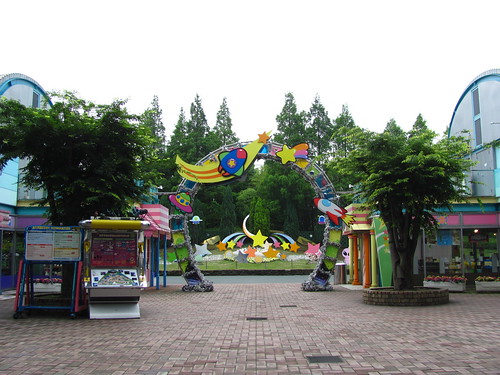






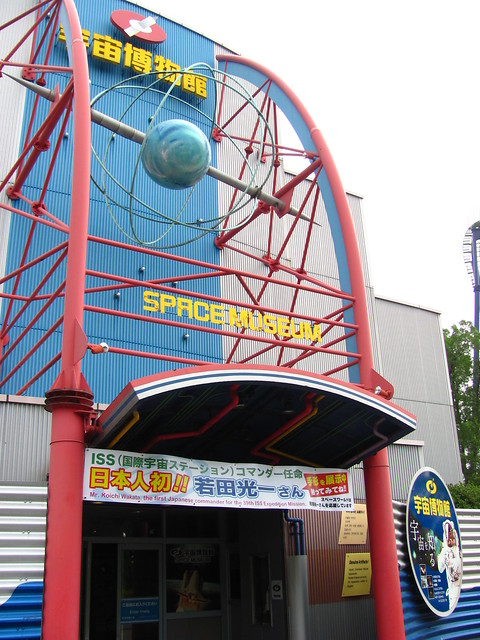








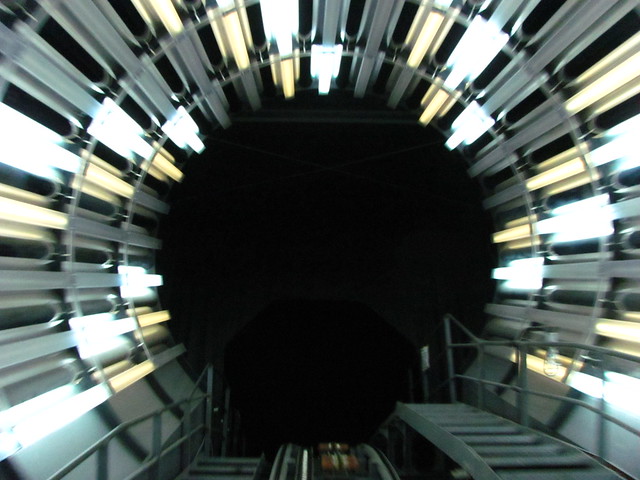























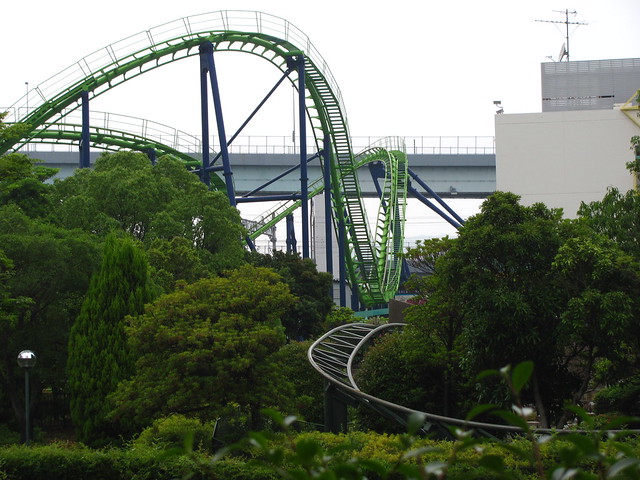










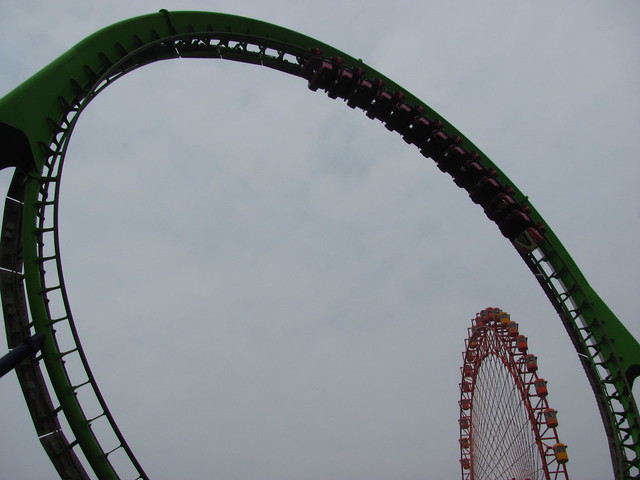



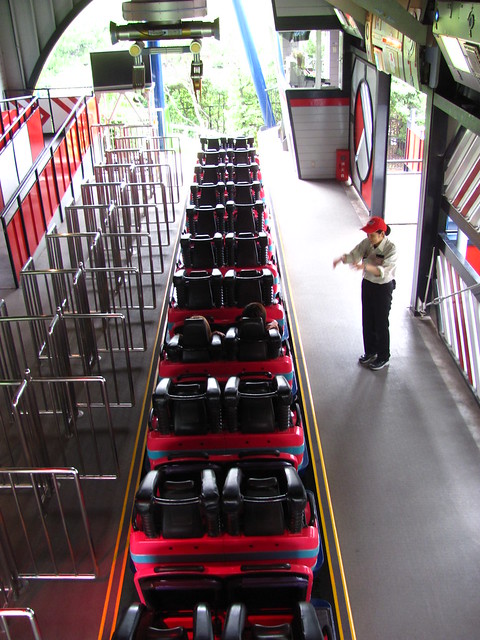
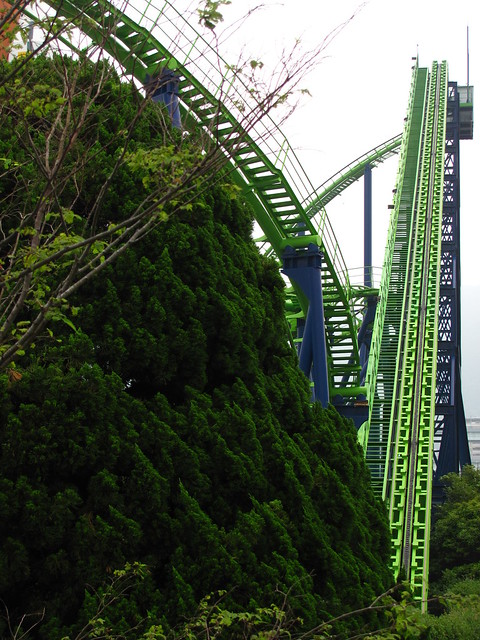






































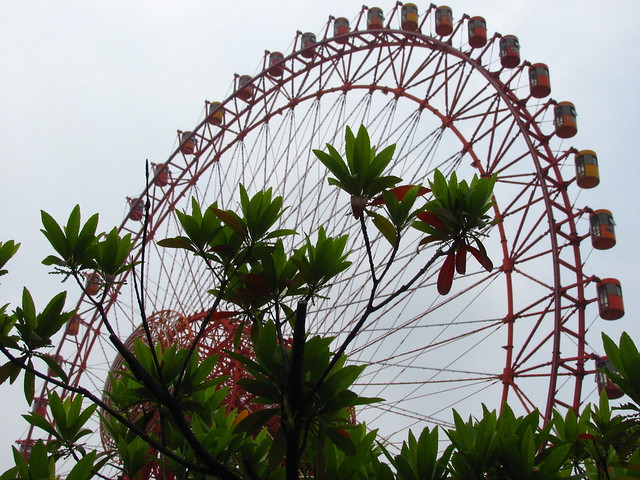










Comments